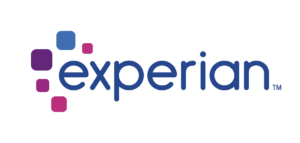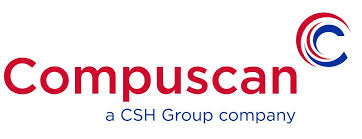KNOWLEDGE IS POWER
DEBT COUNSELLING IS A VOLUNTARY PROCESS
The NCA Debt Counselling/Debt Review Regulations are based entirely on the Consumer's Financial Circumstances.
The NCA regulations do not:
- Bind the consumer to stay under debt review.
- Prevent the consumer to withdraw from the debt review process
- Deny the consumer the rights to cancel the debt review service
Everything that you have heard or read suggesting that you cannot withdraw form the debt review process is merely an opinion or misinterpretation of the regulations
OVER-INDEBTED OR NOT OVER-INDEBTED?
When you apply for debt review by submitting Form 16 or you want to terminate debt review, the debt counsellor is obliged to capture the information you supplied into an NCR approved Financial Circumstances Assessment System. The system shall perform calculations to determine if you are over-indebted or not over-indebted.
- The Debt Counsellor or the Courts do not determine whether you are over-indebted or not over-indebted.
- The determination of whether you are over-indebted or not over-indebted is the outcome of the calculations by the NCR approved Financial Circumstance Assessment system.
- It is the same system that is used to determine the state of your financial circumstances when you decide to withdraw from debt debt review.
NCR APPROVED FINANCIAL ASSESSMENT SYSTEMS
 |
 |
 |
DEBT COUNSELLING IS A VOLUNTARY PROCESS
The Debt Review Application.
When you Apply for Debt Review:
- You are required to submit a mandatory debt review application form named: Form 16
- The debt counsellor is obliged to give you receipt/confirmation of acceptance of the Form 16
- The debt counsellor is obliged to ensure that you understand the debt review process and the impact on your credit bureau records
- The debt counsellor is obliged to inform you that while you are under debt review, you cannot apply for credit
- You are required to supply the debt counsellor with personal details and all your outstanding accounts statements
- The debt counsellor shall interview you and capture your living expenses and advise you on cutting unnecessary expenditures
- The debt counsellor shall then notify all your creditors and the credit bureaus by issuing Form 17.1 that you have applied for debt counselling
- The debt counsellor shall update the NCR Dhs System that you have applied for debt review (Dhs Code A)
- A debt review flag is placed on your credit records at this point
- The credit bureaus notification status shall be one of the following:
- Consumer has Applied for Debt Review
- Consumer is Under Debt Review
- Consent for Restructuring
- Application for Voluntary Debt Restructuring
At this point, you are not under debt review or over-indebted.
The only purpose for placing the debt review flag on your credit records is to warn credit providers that You Have Applied for Debt Counselling.
Debt Counselling Process:
- The debt counsellor will then capture all you financial information in any one of the above system for calculation of your indebtedness
-
The outcome of the system calculation determines whether you are over-indebted or not over-indebted
Where the outcome is that you are Not Over-indebted:
- The debt counsellor shall notify you and issue a Form 17.2 (a) to all credit providers and the NCR.
- The NCR shall update the DHS System and instruct the Credit Bureaus to remove the debt review flag immediately
Where the outcome is that You are Over-indebted:
3. The debt counsellor shall notify you and issue a Form 17.2 (b) to all credit providers and the NCR that it has been determined that you are over-indebted
4. The NCR shall updated the Dhs System with the new code and notify the credit bureau to update your debt review status to:
- Consumer is found to be Over-Indebted
5. The Debt Counsellor shall proceed to draft a re-structured repayment proposal to credit providers
6. Once the credit providers approve the restructured payment proposal,
- The debt counsellor shall inform you and issue you with the 17.2 document to sign and accept the restructured repayment agreement
- The debt counsellor shall proceed to draft a court application for the purpose of making the agreed restructured agreement an order of the court
- The debt counsellor shall draft a supporting affidavit that you need to commission and sign
7. The debt counsellor shall enter the court application for hearing, and update the NCR Dhs System and the Credit Bureaus to reflect:
- Formal debt re-structuring through the courts has commenced
8. Once the court has granted the order, the debt counsellor shall updated the Dhs System and the Credit Bureaus to reflect:
- Formal debt re-structuring is completed, and a court order granted or
- Consent Order for Statutory Debt Restructuring
9. The maximum debt counselling process timeframe including granting of court order is 60 days
- Where any status date displayed on your credit report is passed 60 day and it is not granting of court order, the debt counselling process is deemed expired/lapsed
- The consumer is entitled to request re-assessment or to withdrawal from the process
THE DEBT HELP SYSTEM UPDATE - DHS

- DHS Application Phase Codes:
- Code A - Consumer Applied for Debt Review
- Code A1 - Consumer has withdrawn from the process prior to assessment
- Code B - Consumer not over-indebted - Application Rejected
- Code C - Consumer over-indebted - Application Accepted
- DHS Progress Phase Codes:
- Code D3 - Formal debt restructuring through the courts has commenced
- Code D4 - Formal debt restructuring complete - court order granted
- Code F1 - Consumer has Settled all Accounts (except mortgage) - Issuance of Clearance Certificate
- Code F2 - Consumer has Settled all Accounts - Issuance of Clearance Certificate
- Code G - Voluntary withdrawal by consumer - Removal of debt review flag
- Code H - Application withdrawn by debt counsellor - Removal of debt review flag
THE CREDIT BUREAUS SYSTEMS UPDATE PROTOCOL
 |
 |
 |
- The DHS Code is automatically transmitted via SFTP (secure file transfer protocol) to all credit bureaus.
- The credit bureaus will update the notation and/or remove the debt review flag accordingly.
- You can only remain listed as under debt review because you applied and you are over-indebted.
- If you applied and was rejected or you withdrew from the process - the debt review listing is unlawful and should be removed
- If you applied and you are no longer over-indebted, the DHS System should be updated and the flag removed.
====
REQUEST FREE CREDIT REPORT & DEBT REVIEW REMOVAL ASSESSMENT
INSTANT RESULTS
| FREE REPORT & ASSESSMENT | FREE REPORT & ASSESSMENT | FREE REPORT & ASSESSMENT |
 |
 |
 |
| UNLAWFUL DEBT REVIEW | NO LONGER OVER-INDEBTED | CLEARANCE CERTIFICATE |
If your answer is No to any of the above, the Debt Review Agreement is deemed Unlawful.
If any of the above applies to your debt review situation, you can approach another debt counsellor to update the DHS to remove the debt review flag. Even though you did not apply for debt review, a transfer to another debt counsellor is necessary to authorize access to your information on the DHS system. |
A consumer voluntary applies for debt counselling and is approved and placed under debt review because it has been determined that he/she is struggling to maintain his/her accounts in a timely manner and thus over-indebted. At any time or any stage, If the consumer concludes that the debt review program is not helpful or the consumer's financial circumstances improve, he/she can notify the debt counsellor to terminate the process or to redo the financial circumstance assessment.
The debt counsellor shall update the DHS system with the outcome of the assessment.
If the debt counsellor does not cooperate or unavailable, the consumer can transfer to another debt counsellor - any debt counsellor - to request re-assessment and DHS update to remove the debt review flag.
|
Clearance Certificate can be acquired under the following conditions:
|





